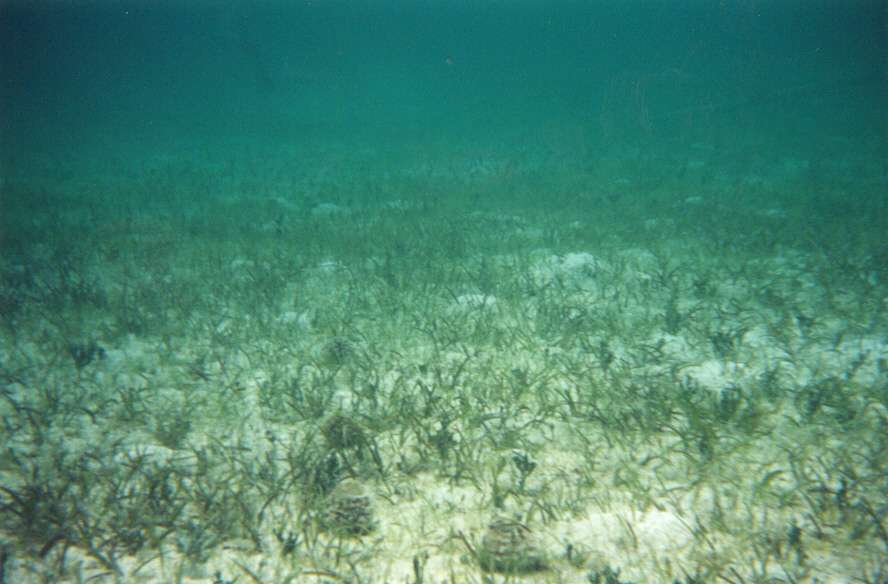
What is the biggest plant in the world? The Posidonia australis in Shark Bay, Australia. It is 200 square kilometers, which is 23 square kilometers larger than the city of Washington DC. It is not just the largest plant in the world, it is the largest organism as well. Researchers sampled it in many different places because they wanted to find how many different species were part of the same seagrass meadow. When they analyzed the DNA, they discovered that it was all the same species.
The Posidonia australis is in Shark Bay, Western Australia. It is a place where the three major climates of Australia meet, making it unique. It has a large amount of Australia’s wildlife and 35% of the birds are estimated to live here. Humpback whales start their migration from here and it has a population of 11,000 Dugongs, a protected species. Shark Bay does, of course, have sharks and there are 28 different species seen here. However, sharks are all over Australia, so it is not that special.
So, what is Posidonia australis? It is a type of seagrass. Seagrasses are flowering plants that can live underwater. They grow in sediment on the sea floor and the water has to be shallow and clear enough for them to photosynthesize. They are an important part of the diets of many animals, including dugongs, which is one reason why there are so many in Shark Bay. They absorb nutrients out of the water, keeping it clear, which helps other animals, but also helps the grass as well. They have an enormous network of roots, which stabilize the sea floor and reduce erosion. They grow in seas that are sheltered from strong waves and currents, and they need the salinity of the sea to be slightly reduced by freshwater runoff. These are all things that Shark Bay has. Because of all the things they do in the area they are active in, seagrasses are known as ecosystem engineers. They are carbon sinks and about 10% of all the ocean’s carbon is held in seagrass.
So, how did this seagrass become so big? Many plants reproduce through pollination, but some plants reproduce asexually. The Posidonia australis seagrass is one of those plants. It has reproduced by cloning itself. The plant starts with a single grass. That may have floated in from somewhere else and taken root here. That grass then grows a shoot that becomes another grass, still attached to the same roots. Then more shoots grow, and more shoots, and more shoots, slowly getting bigger. The roots expand to keep up with the growing shoots. It takes a long time, but this way the grass becomes huge. It is estimated that Posidonia australis has taken 4,500 years to grow to the size it has, and it is still technically growing. This type of growth is not uncommon, and a lot of grasses grow like this. Bamboo is an example, and a field of bamboos trees are all part of the same plant. Unfortunately, the effects of climate change are hindering it. Climate change has brought more powerful storms, which have killed off sections of the plant. The rising and warming waters are also a problem as well. If the water gets over 40℃, the seagrass will stop growing and if it gets over 43℃, the seagrass will die.
This type of asexual reproduction has advantages, but there are also disadvantages. An obvious advantage is that a species can reproduce without having to find a mate. Reproduction is also extremely quick, and a lot of organisms can be produced in a relatively short period of time. It is also possible to pass on any beneficial genes that the organism has. With sexual reproduction, the offspring is a mix of the parents’ genes and there is the chance that there will be mutations in the genes. These can be good or bad and that is basically how evolution works. Some disadvantages are that the genes are copied, so any bad genes are also copied. There is very little chance for diversity in the species. If there is a genetic illness, it could wipe out the whole species. The species finds it very hard to adapt to a changing environment because of this lack of diversity. This is why inbreeding in a species is usually a bad idea. And that is what I learned today.
Image By Jstuby at English Wikipedia – Transferred from en.wikipedia to Commons., Public Domain, https://commons.wikimedia.org/w/index.php?curid=9930539
Sources
https://en.wikipedia.org/wiki/Polyploidy
https://byjus.com/biology/asexual-reproduction
https://www.sharkbay.org/advice/travel-safety/dangerous-wildlife
https://www.dcceew.gov.au/parks-heritage/heritage/places/world/shark-bay#outstanding-universal-value
https://www.nhm.ac.uk/discover/news/2022/june/worlds-largest-plant-australian-seagrass-clone.html
